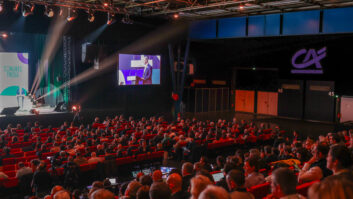If it feels like the Internet of Things (IoT) is only a relatively recent development, then it may surprise you to discover that the term was first coined 20 years ago. Its originator is generally agreed to be Kevin Aston, who deployed the term in describing RFID – whereby electromagnetic fields are used to automatically identify and track tags attached to objects – when working at Procter & Gamble.
The exchange of information remains integral to IoT as we understand it in 2019, but now it is more commonly to be found applied to consumer market products for the smart home. From domestic appliances to lighting systems, thermostats, home security technology and cameras, IoT-connected products allow a new level of control and responsiveness for users accessing them via devices including smartphones and smart speakers. With Gartner forecasting that 25 billion connected devices will be in use by 2021, this is already a massive global trend.
Little by little, the buzz around IoT and its potential for professional applications has also grown louder. As businesses look to optimise their use of energy evermore tightly, energy-consuming devices with internet connectivity can be used to communicate with utilities to balance power generation and minimise unnecessary consumption. Hence, IoT is increasingly regarded as being fundamental to the future of building and home automation technology – but there are also plentiful applications in areas ranging from conferencing to transportation systems and vehicle-to-vehicle communications.
As might be expected at this relatively early stage, the general impression from contributors to this article is one of ‘cautious enthusiasm’. There is talk of potential applications as well as solutions that bridge the gap between pro- and consumer worlds. But there is also recognition that much work needs to be done in order to manage the huge upturn in data resulting from IoT deployments, and to successfully address potential security problems.
The influence of the connected home
Many would concur with the assertion by Mark Childerhouse, director of Pioneer Group, that current developments owe much to the seamless user experience that is now expected in the domestic environment. “The most significant drivers to change in end user perceptions, I would argue, have been the developments in home technology,” says Childerhouse. “Thanks to home assistant devices and voice-commanded smart home lighting and entertainment technology, users expect a fully connected, integrated experience, with their smartphones functioning as a command centre for a whole host of peripheral technology.”
Tony Crossley, special projects director at Pure AV, also highlights the awareness of IoT in the home and the ways in which this is translating to the professional world. “Clients are now far more aware of IoT devices, and many of them are already using products from Apple, Amazon and Google in their homes. As a result, they are interested in exploring this technology in the workplace,” he says.
But without the necessary background reading or guidance, this can easily result in some unrealistic expectations. Joost Demarest is CTO of the KNX Association, which promotes the use of the KNX communications technology for building automation. “The IoT makes people believe that simply hooking up something to the internet will make it miraculously work with anything already connected,” he observes. “Of course, this can hold true if devices are from the same manufacturer or when they are integrated via cloud-based solutions. Today, this mostly does not hold true when the products are from different manufacturers and if they need to communicate directly, without the help of the cloud.”
Crestron director of technology Stijn Ooms is also keen to dispel the belief in some quarters that “with the Internet of Things, if you have one IoT device from one company and one from another manufacturer they will be able to connect instantly and share information. Trying to get one vendor’s motion sensor to talk to another’s lighting system would be a good example. But the reality is that IoT has not reached that stage yet and so there is still programming and customisation required [to achieve that level of data exchange].”
“Integrators must equip themselves with the skill-set that means they understand how to deploy, monitor and manage these devices successfully”
Stijn Ooms, Crestron
Success ‘about being selective’
It therefore follows that, for integrators and consultants, managing expectations tends to be a major part of current IoT-related projects. But perhaps even more critical is the need for them to work closely with clients to identify applications or individual aspects of a project where IoT can bring real benefits over the long-term.
Integrators should be ready to have difficult conversations with clients, indicates Ooms, for instance with regard to the common assumption by end users that “once everything is connected [the installation] will be the subject of simple updates, but in fact that won’t always be the case.” With the IoT ecosystem growing steadily, “integrators must equip themselves with the skill-set that means they understand how to deploy, monitor and manage these devices successfully.”
Childerhouse acknowledges the pressure on integrators to expand their use of IoT, but he thinks that ultimately “it’s about being selective. Integrators need to think carefully about what end users want from the service and work backwards from there. They should think carefully about connecting devices which support a service the end user requires, and also [make accommodation] for how these demands may change in the future.”
Indeed, for both vendors and integrators, it should never be a matter of “being able to say that we do IoT – it must be about the user experience,” says Joe Andrulis, executive vice president of corporate development, Biamp Systems. “The starting point should always be how do we create a great user experience and then consider what we need to do to deliver that.”
Meanwhile, as public interest in IoT grows, integrators must also be prepared to flag up potential problems. It is crucial, says Crossley, “to offer guidance to our clients, and if we feel that they are pushing too hard towards an IoT solution we have to highlight the potential pitfalls.”
www.biamp.com
www.crestron.com
www.knx.org
www.pioneergroup.co.uk
www.pureav.co.uk







